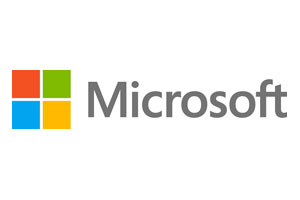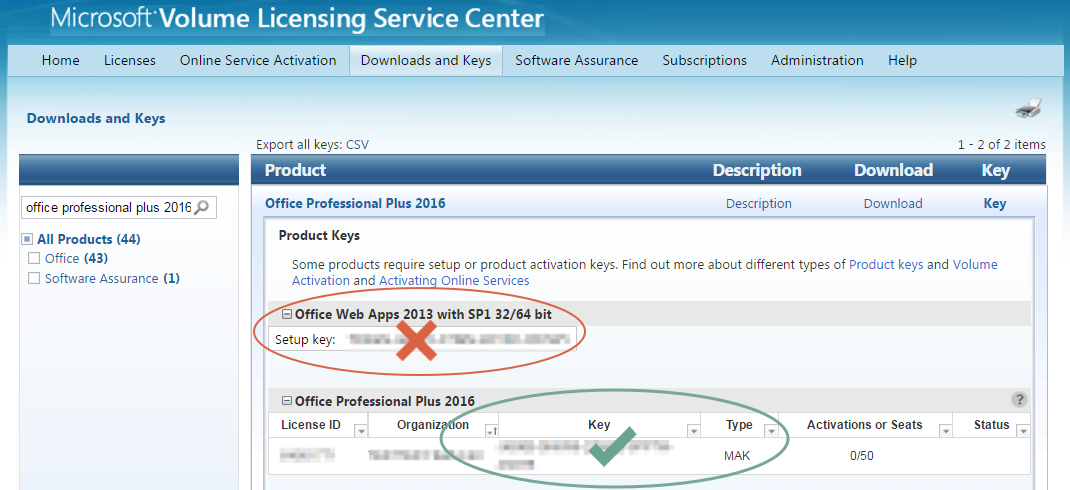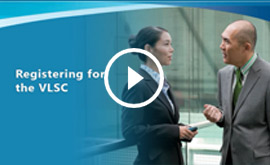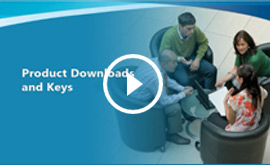
Have you placed a Microsoft donation request through TechSoup but aren't sure how to get your donations? Follow the instructions in our quick-start guide.
You can use these instructions if you
- Successfully placed a Microsoft donation request through TechSoup and received an email confirming your request
- Received an email from TechSoup on behalf of Microsoft with details about your donation
- Received an email from the Microsoft Volume Licensing Service Center (VLSC) notifying you that your license agreement is ready to be accepted
- Step One: Register at the VLSC
- Step Two: Accept Your Agreement
- Step Three: Download Your Requested Software
- Step Four: Burn Your Software to a Disc
- Step Five: Install it!
- Need More Help?
Step One: Register at the VLSC
The VLSC is an online tool for managing Microsoft Volume Licensing agreements, downloading products, and accessing volume license keys.
Before you can download and install the software you requested, you'll need to register and accept your agreement at the VLSC.
If this isn't your first donation request and you've already registered at the VLSC, skip to Step Two.
To register at the VLSC
- If you don't have a Microsoft account, sign up for one. It's best to sign up for your Microsoft account with your organization's business email address. This is your organization's email address with TechSoup.
- Once your Microsoft account has been created and you've received a confirmation email, go to the VLSC at https://www.microsoft.com/licensing/servicecenter.
- Click Sign In.
- Enter your Microsoft account email address and password; then click Sign In.
If you aren't a registered user, you will be asked to confirm your business email address.- You will receive an email that welcomes you to the Volume Licensing Service Center and asks you to validate your information.
- Wait at least 15 minutes and then open this email and click the link to validate your email address. You'll need to wait at least this long because there is a lag before the VLSC makes the terms and conditions available.
Need help with VLSC registration? Contact your local Microsoft VLSC support center. Let them know that you represent a charity that received a Microsoft donation, and you need help with an Open License Agreement.
You can also watch a video from Microsoft to learn how to register (Internet Explorer required). The video uses the term "Windows Live ID," which is the former name for a Microsoft account.
Step Two: Accept Your Agreement
After you click the link in the welcome email to validate your email address, you should be signed in on the VLSC website. If not, simply go to the VLSC and sign in before proceeding.
You'll be prompted to sign and accept the terms and conditions of the Open License Agreement. You'll need to accept a new agreement each time you place a donation request for Microsoft software.
To accept the agreement terms
- Select the appropriate options from Country of Usage and Language and click Display.
- Review the Open License Agreement, enter your name, and click I Accept.
If you aren't immediately prompted with the terms and conditions on the VLSC, It might take up to 48 hours for access to be granted. Keep the validation email and click the link in it again after a 48-hour period.
Need help with accepting your agreement? Contact your local Microsoft VLSC support center. Let them know that you represent a charity that received a Microsoft donation, and you need help with an Open License Agreement.
Step Three: Download Your Requested Software
To download your software
- If you haven't already, sign in to the VLSC.
- Choose Downloads and Keys from the navigation bar. The Downloads and Keys page appears, showing all products in your donation, grouped by families.
- Find the specific product you want to download. You can download the current or previous version of any product you request through TechSoup on the VLSC.
- Click the Download link associated with that product.
- Select your download method, language, and operating system type if applicable (32-bit or 64-bit). You can choose any version or language of a product that's available. You can use either Microsoft's recommended download manager or your web browser for the download. Click Continue.
- Click the Download down arrow icon that appears under your product listing.
- If you are using your web browser to download your software, the Save As dialog box appears. Specify your location and click Save to start the download. Repeat as needed for other download files.
- If you are using the download manager, the application opens, and the download begins. The download manager displays the progress and status at the top of the window. You can click Pause at any time to pause the download operation. You can restart the download manager and click Resume at a later time.
For server products that require setup codes for installation, the codes appear on the VLSC download page after download is complete.
Need help with locating the correct product or downloading your software? Sign in to the VLSC and choose Help from the VLSC menu bar. Then click the name of the FAQ that relates to your question. You can also contact your local Microsoft VLSC support center. Let them know that you represent a charity that received a Microsoft donation, and you need help with an Open License Agreement. Microsoft VLSC support can help you find the correct product to download, but they do not provide free troubleshooting for download or installation issues.
You can also watch this video from Microsoft to learn how to download your requested software (Internet Explorer required). The video uses the term "Windows Live ID," which is the former name for a Microsoft account.
Step Four: Burn Your Software to a Disc
The files downloaded from the VLSC have the file extension .iso. An ISO file downloaded from the VLSC is a copy of the installation CD or DVD. The simplest method is to burn this file to a DVD using a DVD writer. Most Microsoft applications don't fit on a CD and require DVD.
If you want to pay to be sent a disc instead of burning your own, see How to Order Installation Media from Microsoft.
To burn your ISO file to a disc for easy installation
- Insert a recordable DVD into your disc burner.
- In Windows 7, 8, or 10, right-click the ISO file and select Burn disc image. Mac users, follow these instructions.
- Verify that the correct drive is listed under Disc burner. If not, change it.
- Check the box next to Verify disc after burning and click Burn to begin writing the disc.
If you don't see the option to Burn disc image in step 2, you might have other disc writing software installed. You can simply use that disc writing software instead, or you can follow these steps to use the Windows burner:
- Windows 7: Right-click the ISO file and select Open with, and then select Windows Disc Image Burner.
- Windows 8 or 10: Right-click the ISO file and select Open with, and then select Choose default program and assign it to Windows Explorer to make Burn disc appear as a right-click option.
Step Five: Install It!
After you burn the ISO file to DVD, insert the DVD in any computer to start the setup. You can install the software on as many computers as you've requested licenses. For example, if you request two licenses, you can install the product on two computers. If you didn't request enough licenses, you can request additional licenses through TechSoup as long as you don't exceed Microsoft's product request limits.
You'll probably need your product key to activate the products during installation (most license-only products do not require keys or codes for setup). There are two types of keys you can choose from for Volume Activation: a Multiple Activation Key (MAK) and a Key Management Service (KMS) key. The MAK is the simplest option and is the type of key provided by default for licenses requested through TechSoup. You'll enter this key on each computer where you install the software.
To get your key
- Sign into the VLSC.
- Choose Downloads and Keys.
- Find your product in the list and click its Key link.
- In the table beneath the name of the product, get your key from the column labeled Key.
- The Type column shows whether the key is MAK or KMS.
- Some products like Office have separate setup keys for online functionality like web apps. These keys are not the same as the MAK or KMS product keys and cannot be used for Volume Activation of desktop products.
- For products that don't require a key, the Product Keys field reads: "This product does not require a product key."

- You can copy individual keys from this table or click Export all keys: CSV just above the list of products to download a list of keys in comma-separated-values format (which can be opened with Excel). This list contains all Volume License Keys associated with agreements in your VLSC profile.
Learn about other types of keys and activation options if you are installing software on many computers on a network in Microsoft's Product Keys FAQ.
Do you need help with installing or activating your software? Sign in to the VLSC and choose Help from the VLSC menu bar. Then click the name of the FAQ that relates to your question.
Need More Help?
Read our other topics about common VLSC tasks, including
- How to Get Help with the VLSC
- How to Add Licenses or Individuals to Your VLSC Account
- How to Order Installation Media from Microsoft
- How to Use or Renew Your Software Assurance Benefits
- Software Assurance Benefits Included with Microsoft Donations
- Licensing Details for Microsoft Donations
This work is published under a Creative Commons Attribution-NonCommercial-NoDerivs 4.0 International License.


